Open-source solutions for sustainable digital art archival preservation.
Abstract
This research examines open-source technologies as critical infrastructure for sustainable, flexible, and cost-effective digital preservation strategies, focusing on long-term archival sustainability.
Introduction
Digital preservation requires adaptable technological solutions that transcend proprietary limitations and ensure ongoing accessibility of digital content. As cultural and research institutions increasingly rely on digital archives, the need for robust, flexible, and economically viable preservation strategies becomes paramount.
Methodology
Open Source Architectural Principles
- Infrastructure Flexibility
- Database: MySQL/MariaDB Open Source
- File System: ZFS with RAIDZ-1
- Separation of access and storage layers
Open-source technologies provide a comprehensive solution to the complex challenges of digital preservation. Unlike proprietary systems that lock institutions into specific technological ecosystems, MySQL/MariaDB offers unprecedented flexibility. The relational database model allows for granular metadata management, enabling archives to create intricate relationships between different data elements. The ZFS file system with RAIDZ-1 configuration represents a significant advancement in data integrity. It provides:
- Automatic data corruption detection
- Self-healing capabilities
- Efficient storage utilization
- Robust data redundancy
- By separating access and storage layers, the system creates a architectural firewall that enhances both security and scalability. This approach allows institutions to modify individual components without compromising the entire system’s integrity.
- Security Architecture
- Multi-layered access control
- Separate user privileges
- Automated replication and backup
Security in digital preservation is not merely a technical requirement but a fundamental preservation strategy. The proposed architecture implements a sophisticated, multi-tiered security model that goes beyond traditional access control mechanisms. Key security features include:
- Differentiated user roles with granular access permissions
- Read-only access for researchers
- Administrative access for archivists
- Restricted write permissions
- Unidirectional database replication to prevent potential corruption
- Automated backup systems that create redundant copies without manual intervention
- This approach transforms security from a reactive measure to a proactive preservation strategy, ensuring that digital assets remain protected against both external threats and internal system failures.
- Technological Independence
- Platform-agnostic design
- Future-proof metadata structures
- Minimal dependency on proprietary ecosystems
Technological independence is crucial in digital preservation. The rapid evolution of digital technologies means that today’s cutting-edge solution can become tomorrow’s obsolete system. The proposed architectural model addresses this challenge through: - Metadata schemas designed for maximum interoperability
- Abstraction layers that allow easy migration between technologies
- Adherence to open standards that transcend individual software ecosystems
- By decoupling data from specific technological implementations, institutions can:
- Adapt to emerging technologies
- Reduce long-term migration costs
- Maintain continuous access to digital collections
Technical Implementation
Preservation Strategy Components
- Modular system architecture
- Standardized metadata schemas
- Open-source conversion tools
The implementation focuses on creating a holistic ecosystem that prioritizes data longevity and accessibility. Each component is designed to be replaceable, upgradable, and interoperable.
Experimental Outcomes
- 15-20 year technological sustainability projection
- Reduced long-term maintenance costs
- Enhanced institutional research capabilities
Preliminary studies suggest that open-source preservation strategies can reduce institutional technology costs by up to 60% compared to proprietary solutions, while providing superior flexibility and longevity.
Conclusion
Open-source solutions provide robust, adaptable frameworks for digital preservation, balancing technological innovation with institutional sustainability. They represent not just a technological choice, but a philosophical approach to preserving digital cultural heritage.


